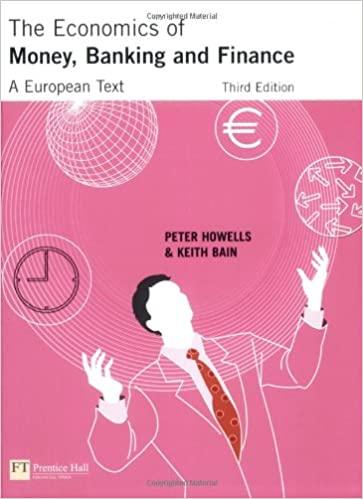
 Working out for C and D?. Also, reasoning for part F.
Working out for C and D?. Also, reasoning for part F.
Question Suppose that Anna can work at an hourly wage of w equals $6 per hour, and that there are 112 hours in the week that can be assigned to either work or leisure. Her utility function U depends on the hours of leisure L and the level of consumption C and is given by the function U(C,L)=(C36)(L+62). (a) How many hours of work will Anna choose each week? How much will Anna consume? Use a diagram to illustrate your answer. Suppose the wage is w instead of $6 per hour. (b) Derive the level of leisure and hence the hours worked H as a function of w. Suppose there are a large number of workers in the economy, so that the labour supply curve is given by H=w+6 while labour demand is given by D=1022w. (c) What is the market equilibrium wage and quantity. Calculate the worker surplus, and mark it on a diagram. Initially there were no foreign workers. But suppose that workers from abroad migrate into the country, so that the new labour supply curve is given by H=w+24. (d) Calculate the new market equilibrium wage and quantity. Calculate the new worker surplus for domestic workers, and mark it on a diagram. (e) Explain whether domestic workers are better-off, whether firms are better-off and whether foreign workers are better-off. Borjas (1995) calculated that US workers have benefited by $9 billion from immigration to the US. Dustmann, Frattini and Preston (2013) estimated the wages of British workers increase by 0.1-0.3 percent for each 1 percent increase in the level of immigration. (f) Are these empirical results consistent with part (d) and (e)? If not, what can explain their results? Comments: (a) Anna works 90 hours each week and consumes $540. (b) Anna works 87+18/w. (c) The equilibrium is w=32 and H=38. The WS=704. (d) The equilibrium is w=26 and H=50. The WS=494. (e) Domestic workers are worse-off while domestic firms and foreign workers are better-off. (f) Inconsistent; the results suggest domestic and foreign workers are complements not substitutes. Question Suppose that Anna can work at an hourly wage of w equals $6 per hour, and that there are 112 hours in the week that can be assigned to either work or leisure. Her utility function U depends on the hours of leisure L and the level of consumption C and is given by the function U(C,L)=(C36)(L+62). (a) How many hours of work will Anna choose each week? How much will Anna consume? Use a diagram to illustrate your answer. Suppose the wage is w instead of $6 per hour. (b) Derive the level of leisure and hence the hours worked H as a function of w. Suppose there are a large number of workers in the economy, so that the labour supply curve is given by H=w+6 while labour demand is given by D=1022w. (c) What is the market equilibrium wage and quantity. Calculate the worker surplus, and mark it on a diagram. Initially there were no foreign workers. But suppose that workers from abroad migrate into the country, so that the new labour supply curve is given by H=w+24. (d) Calculate the new market equilibrium wage and quantity. Calculate the new worker surplus for domestic workers, and mark it on a diagram. (e) Explain whether domestic workers are better-off, whether firms are better-off and whether foreign workers are better-off. Borjas (1995) calculated that US workers have benefited by $9 billion from immigration to the US. Dustmann, Frattini and Preston (2013) estimated the wages of British workers increase by 0.1-0.3 percent for each 1 percent increase in the level of immigration. (f) Are these empirical results consistent with part (d) and (e)? If not, what can explain their results? Comments: (a) Anna works 90 hours each week and consumes $540. (b) Anna works 87+18/w. (c) The equilibrium is w=32 and H=38. The WS=704. (d) The equilibrium is w=26 and H=50. The WS=494. (e) Domestic workers are worse-off while domestic firms and foreign workers are better-off. (f) Inconsistent; the results suggest domestic and foreign workers are complements not substitutes

 Working out for C and D?. Also, reasoning for part F.
Working out for C and D?. Also, reasoning for part F.





